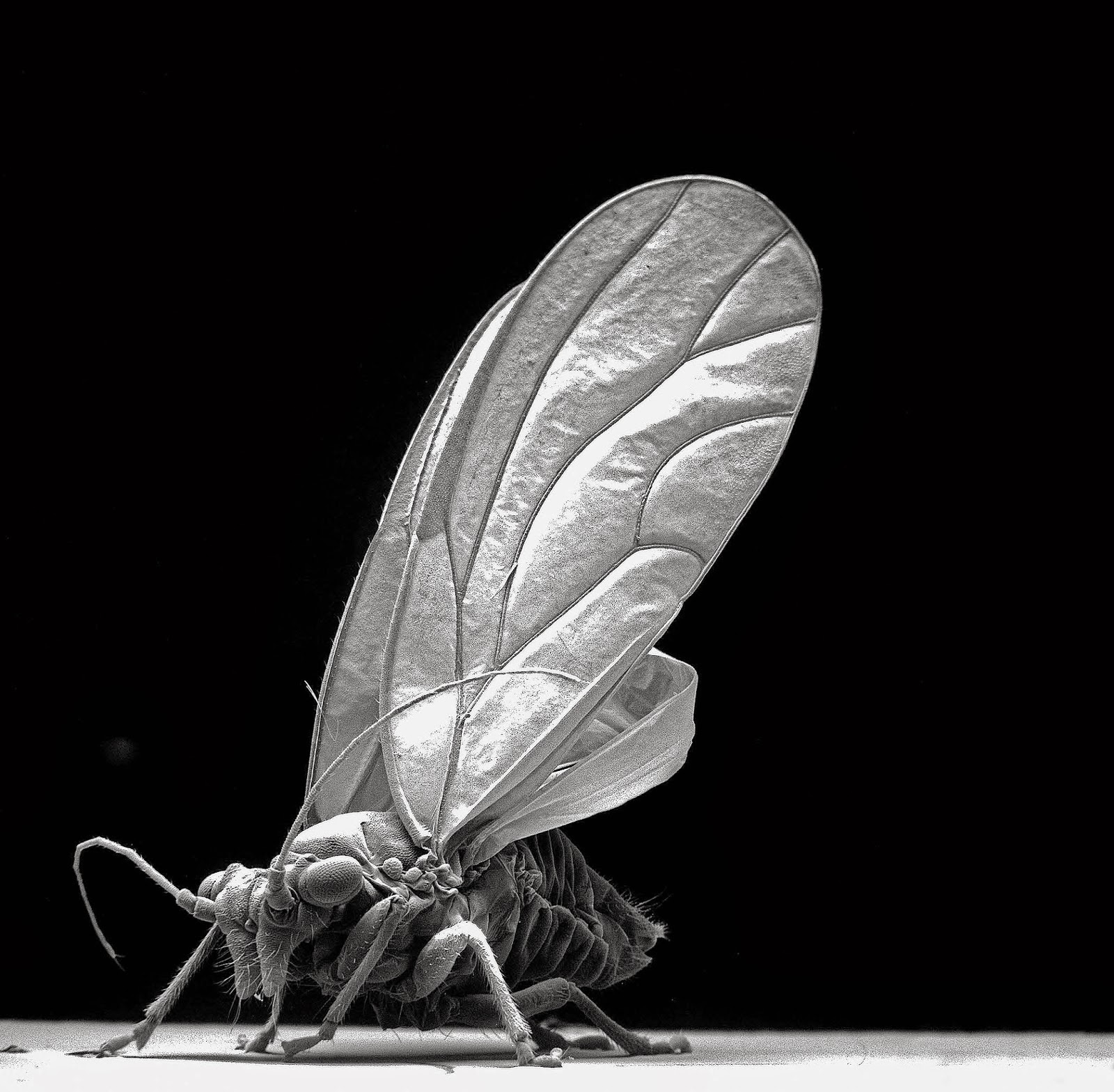Pretty Quick: The Art and Architecture of Insects by David M. Phillips, 2014, 9781611685329.
I took this home in case my kids would read it. Filled with big black and white photos of insects. Phillips was a medical researcher until he retired but has been a lifelong bug collector. He selected his best electron microscope photos - some bugs are too small for the naked eye - and shows us some bugs. All the insects are gross.
117 pages long and over half the space is photos. Phillips gives description and explanations of many insect parts: eyes, exoskeleton, head, antennae, that one gross bit, and that other gross bit. You'll be reading about many things you already learned. That's okay, you relearn the old stuff and find out new stuff.
For instance, those disgusting antennae and hairs have many uses. The revolting compound eyes don't give an image like the simulations I've seen before where a single view is repeated 100 times in bug eye shape. No, each facet should be thought of as supplying a pixel of information. Eyes can also see UV light, it helps them to identify the plants they eat to grow even more repugnant.
One reason a squash-worthy bug's reaction time is so quick is the short distance for the nerve impulses to travel. Teeny, tiny nauseau inducing bugs have such small bodies the nerve impulses are instantaneous compared to ours. The antennae and feet recognize vibrations and they bugs skip town, a small bug can jump the human equivalent of hundreds of feet and escape most predators.
Female insects can store sperm. Sperm is stored in an abdominal chamber for life. Some male bugs "remove another male's sperm from the genital tract of a female who has previously mated before mating with her. The penis of dragonflies is specialized for this purpose."
Phillips collected his revolting specimens, stuck'em in ethyl alcohol, posed them on a platform, coated the corpses in an electrified and atomized gold, and then took the photos. All the photos are black and white. Phillips used film and "natural colors are difficult to represent accurately" so he kept the black and white.
Black and white is fine because you still may want to wash your hands after seeing so many yucky flies, wasps, bedbugs, earwigs, beetles, weevils, caterpillars, treehoppers, thrips, mosquitos, springtails, and termites.
I read some of the text to the nine-year-old Ian and he said, "That's interesting." He was angry about something at the time so the book was a good distraction.
Photos courtesy of ForeEdge Press via Slate at http://www.slate.com/blogs/behold/2014/08/07/david_m_phillips_photographs_insects_with_an_electron_microscope_in_his.html
Subscribe to:
Post Comments (Atom)



1 comment:
My grandson would have loved this a few years ago when he was five and interested in more than Ninja Turtles and Batman. I will buy it anyway in hopes of a return to good sense.
Post a Comment